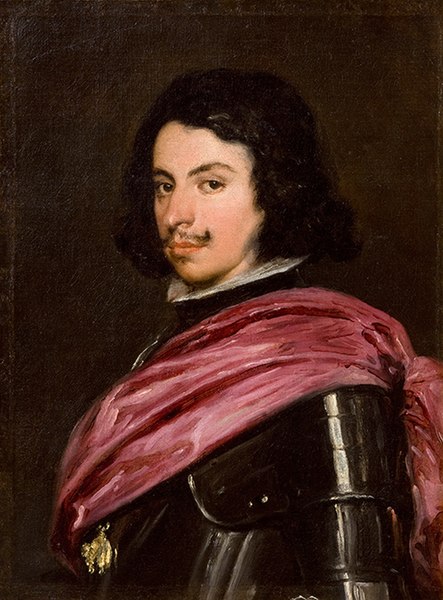The portrait was painted between 1638 and 1639 during Francesco I’s Spanish stay: in fact, King Philip IV of Habsburg, in need of support against France, invited the Duke to his court. The journey, after an initial stop in Barcelona, ended in September 1638 in Madrid, where Francesco I was welcomed with great magnificence in the Buen Retiro Palace. Obviously, the great honours reserved for the Duke implied a political purpose, but the concessions bestowed by the King were important: he was awarded with the Toson d’Oro and appointed Viceroy of Catalonia and General of the Two Oceans, as well as receiving large sums of money. To these prestigious honours must be added the work of Velasquez, court painter and already of outstanding reputation. The portrait that we all know for its refinement and elegance, however, may not be the work commissioned by the Duke, but only the model painted by Velasquez to later elaborate the equestrian portrait of Francesco I. This painting, much larger than the one in Modena today, was never finished, probably also due to the changed political conditions between the two states that led to the Duchy of Este abandoning its alliance with Spain. Recent investigations on the canvas have attested that it was not subsequently cut, thus proving that it cannot be the large equestrian canvas that was commissioned and then adapted as a portrait.
The image of Francesco is characterised by the rapidity of the brushstroke and the strong psychological value that Velasquez is able to transfer in his portraits, getting in touch with the interiority of the people he paints. Although depicted with the symbols of power, many critics point out that the figure of the Duke shows a slight tension, this state of mind emerges from his slightly frowning mouth and distrustful gaze. Francesco is portrayed in the guise of a condottiere wearing a dark suit of armour, illuminated only by a few flashes of light, while on his chest he shows the necklace of the Toson d’oro partly covered by a red band symbolising his recent appointment as General of the Two Oceans. The young Duke is portrayed in a three-quarter view, the distinctive features of his physiognomy emerge from his face, such as his long nose, his slight upturned moustache and his thick, dark, curly hair that flows down to his Spanish-style schooner. Only the light tones of the face and the bright tones of the dark red band emerge vigorously from a palette dominated by sombre tones.
Velasquez’s rapid brushstrokes leave a sense of ‘unfinished’ to the Duke’s profile, tracing his personality in a portrait that has become symbolic. After his stay at the court of Philip IV, Francesco I clearly understood the importance of art – and especially painting – in the pursuit of political and propagandistic ends, which is why both the number of art commissions and the number of artists called to court multiplied after his return.







